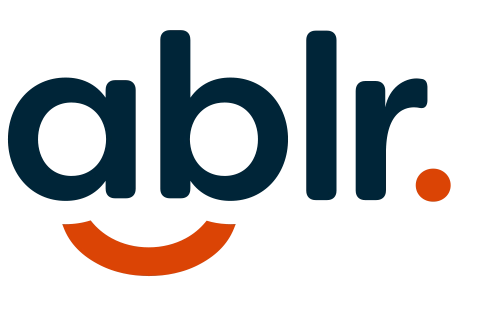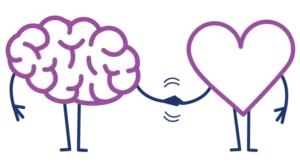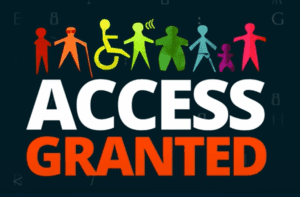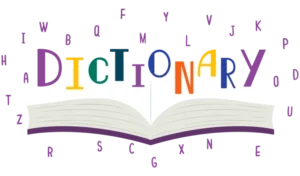John Samuel
– Hey, this is John Samuel and this is All Access with John Samuel. The show where we share the stories of leaders, entrepreneurs and advocates and how they’re improving the lives for people of all abilities. Today, I’m excited to have Birkir Gunnarsson who’s the digital accessibility lead at BB&T now Truist. Birkir and I have been friends now for over the past year and his wife Suzanne actually even works for my team now. So, super excited to have him here today. Hi Birkir, thanks so much for joining us today.
Birkir Gunnarsson
– Thanks for inviting me.
John Samuel
– Awesome. Birkir, I really wanted to just kind of learn a little bit more about your past and kind of your childhood growing up in Iceland.
Birkir Gunnarsson
– Yeah. It was interesting in a good way. I had a fantastic family. I was born with retinal blastoma, which is a cancer caused by genetic defects. It manifests itself basically, as a cancer of the eyes. Mine was bilateral, which means it got to both eyes simultaneously. So yeah, I was diagnosed at I believe age four or five months. The right eye was removed immediately. But then, for the left eye, the wanted to try to save it. So my dad traveled back and forth with me to London for the next five years, about four times a year, to Moorfields, which is one of the premier establishments for radiation. So, you kn ow, I received my chemo therapy there and got a boatload of radiation. They kept everything going for a while but eventually the cancer beat them out. So, I had the second eye removed when I was almost six and it’s really awkward, I still remember the night before the surgery trying to imagine what being blind would be like. And the thought of it as not seeing at all, actually, I thought it was a scene black, I could not imagine come the idea of not seeing at all. If not perceiving anything with your eyes. After the surgery, I woke up I’m like, oh, okay, now I get it. Because you have to try to get it and I hope nobody gets to try it.
John Samuel
– Yeah, that’s pretty heavy at six years old to be thinking about that. But, you know, how was it in school, kind of your friends, how did that all get impacted?
Birkir Gunnarsson
– I was lucky in that, Iceland is just a small society, where they really take care of their own. So I had a very dedicated support of I basically did an after school program with kind of special education or we call it the blind division. It was one elementary school that basically had staff of I think four or five teachers to about six or seven students. So I got directly into the whole EDL tying my shoes, buttering bread and learning Braille and typing and doing all of these things. And I started out this way behind the floors, and I was kind of lost, but I just had a very fantastic family, and the staff of this division, they were just fantastic. And three or four years I kind of got myself confidence back then I discovered swimming. We had a Swim Club for people with disabilities, and that really got me into sports and kind of built my self confidence and I also got into music and got into bands. So I became, the weird nerdy kid in class. I wasn’t like the cool popular kid, but I started gaining some respect from playing music.
John Samuel
– You mentioned the confidence building that you received from swimming and participating in the band. I mean, how important do you think that has been in just your success thing in life so far?
Birkir Gunnarsson
– I think it meant everything to me. It’s hard to be a blind kid ’cause you’re not gonna, play the cool games, you’re not gonna draw the board or exchange notes in class or any of that. You’re a little bit isolated. So you kinda have to find your way to a, find the belief in yourself and b, connect with others and make friends. And through the swimming, I started training hard and I had really good coaches, and all of a sudden, I was invited to go to Sweden to compete. It was like a very informal competition, but all of a sudden, I’m like, whoa, I’m on an airplane, I’m going to Sweden to compete against others. Damn, I’m not that bad, after all. I was 11, or 12, it just hit me that that was really cool. And through music, I started out, you know, piano lessons, I had the most patient teachers in the world and I was really awful for a while, but all of a sudden, I started just enjoying it and writing songs and all of a sudden, that’s how I made my friends in class. And looking back at almost all my friends since I made them either through swimming or through music.
John Samuel
– That’s awesome. You know, you weren’t just a pretty good swimmer, you competed in the Paralympics. Can you tell me about that experience?
Birkir Gunnarsson
– Yeah, it was really fun. So for me, basically, I transitioned from, the swim club for people disabilities to a regular swim club when I was good enough. And I just hit it off with the group of people, the kids were training there. In fact, we’re still best friends today and this is like 30 years later. So, going to practice was never a chore, you had to like your friends were there, everything the gossip, everything was going on. So, I started training eight times a week and swimming something like 30, 40 miles a week and got into super good shape. So I went to Barcelona and I remember my first events I totally messed it up, I was too nervous. But I think by my first event was 400 meter freestyle. And I just woke up that morning saying, “Dammit, I’m gonna win a medal today.” Probably everybody says that every morning, but at least that day I did made it to bronze medal, so.
John Samuel
– Where do you have that medal today?
Birkir Gunnarsson
– I gave it to my kids and they kind of lost it. They are not as impressed as I was, but it’s somewhere around the house. I got another one in ’96. In fact, the first time I came to the US was to Atlanta. And that was kind of the last performance in the pool. So I got another bronze medal there. But those two are yeah, somewhere around the house.
John Samuel
– That’s very cool.
Birkir Gunnarsson
– My other big love before I got married was the internet. So at age 12, I got my first taste of a Braille display with the DOS computer excluding the DOS four. This is built back in ’89 or ’90. And I was like, holy crap, I can actually type by myself and I can print essays. I don’t have to read in Braille and have somebody transcribe it. Well, this is cool. And then, I wrote like a two line program that automated something I think it printed Hello World and like, damn, I’m a programmer now, this feels good. Yeah, that got into it’s called Burke, which is the super old old online chat program. It’s a little bit like Facebook except you basically, you join, then you have to type in channel names, there are people in those channels that chat. Yeah, I was chatting with people from all over the world including three or four people from the US. They even asked me more and more what I wanted to do. I finished high school in ’96. I finished with a third highest grade in my class, I think about 200 people. I like to pretend I was so smart, but I think the other kids were just having too much fun partying and I wasn’t so I would just do my homework. Whatever it is, I got pretty good grades and a good high recommendations and I was like, okay, I’ll go to university of Iceland. I started there. So, yeah, went to the Olympics, came back. And then I went to the University of Iceland, and it was like, there was no support for people with disabilities there. I couldn’t really access any of the textbooks. University of Iceland is just a sink or swim organization. There’s no support for any student, let alone students with disabilities. So, one of the people from a pope channel was going to Yale and she’s like, why won’t you come to Yale. I was like, “Are you out of your mind? “That’s just crazy.” And she like, “I’ll send you the application form, like what’s the harm?” So I applied and I got in.
John Samuel
– Wow, that is awesome.
Birkir Gunnarsson
– So that’s how I came to the US rather unexpectedly. I didn’t even know where Yale was before.
John Samuel
– Yeah, how was New Haven for somebody who is blind?
Birkir Gunnarsson
– I don’t know, I mean, I flew from this Reykjavik, this huge city of back then about 100,000 people to New York City. So, I was pretty taken aback. I was like, oh, wait a minute, what’s happening? Fortunately, my sister, she went to Pittsburgh like 10 years earlier. Fell in love and got married, so I had my ally. She traveled all over the place, helped me with everything. Drove me to Yale, like helped me get set up in room and then she left. And like I just remember the first night was hot. I was like, holy crap. I opened a Pepsi, half finished it, went to sleep. Woke up with ants crawling along my legs. And actually I don’t have any bugs. So I was like, whoa, there are bugs here, what the hell?
John Samuel
– And so after college kind of what did you want to do when you’re graduating college and kind of what did you do?
Birkir Gunnarsson
– So, I went to Yale knowing I wanted to do computers, just because I realized as a blind person, the future lay in technology. I wasn’t gonna do any cool jobs professor, policeman or when I was little, I always wanted to be a garbage man that was my dream. I realized that was just not doable. So I had to go with technology. And I wasn’t good at programming. I got a C minus in my first class at Yale. I totally bombed it but my professors was like stick with it, you can get this done. Went up to C plus and then up to B’s, I was never an A plus student but I managed to get through it eventually. And then the juniors year summer, Microsoft was recruiting on campus at Yale. And everybody’s like, yeah, I’m too stupid to interview Microsoft. I’m like, it’s a Thursday night, I got nothing to lose. So I went to talk to them and got an internship.
John Samuel
– Oh, fantastic.
Birkir Gunnarsson
– And then senior year, that was fantastic, I got to meet Bill Gates, great guy, very impressed. And senior year, I decided to repeat this good thing about Yale, I mean, the best thing about Yale is a, you get all the support you need if you get into university of that caliber. And b, everybody comes to Yale to recruit. You automatically get labeled as a smart kid whether you are or not, I don’t know. I interviewed with Covia, a guy from fixed income securities. I just say, my other other interests was economics and finance. And I actually had enough classes to get a BS degree. And the guy was doing fixed income securities that kind of combines programming and data analysis, and he’s like, “Have you thought about that?” And I got hired way before I left school. So I went out to Charlotte in North Carolina for the first time. I never heard of it before. It was weird. All of a sudden I had graduated, I was going to a city I had never lived in, I had never heard of. But I’m like, well, screw it what’s the chance, you know, what’s the worst that’s gonna happen. So that’s how I ended up in banking and program.
John Samuel
– That’s awesome. And so how long were you with Wachovia?
Birkir Gunnarsson
– Five years. Started in ’02 and then you know, I did good initially, then I started running into problems because I wanted to get certified, like certified financial analyst. This is a certification that can really get you to the next level in the banking industry. I was impossible to get materials, study materials in any accessible format, because this is not a university. You have to fend for yourself. You don’t have student office to help. I was fighting it. So I went to an MBA , I got into an MBA program, but then unfortunately, cancer struck again. So by that time we were engaged and had a baby coming. So we freaked and decided to move to Iceland for family support. And then Covia went under shortly after. So, yeah, it didn’t work out very well.
John Samuel
– Yeah, that’s when you and Suzanne were engaged at this point.
Birkir Gunnarsson
– Yeah.
John Samuel
– So, how did you meet Suzanne?
Birkir Gunnarsson
– Online again. She was studying ONM, Orientational Mobility studying to become an instructor. It’s one of her art hobbies. That was way back when there was a website called pop real another online chat room. It wasn’t a dating website. It was just blind people getting together and chatting. It turned into zone BBs later, which is now defunct. It was a community of about 100 people that logged on every day and chatted. We got chatting, I think in 2003. And we were online friends for three years before anything happened.
John Samuel
– That’s awesome.
Birkir Gunnarsson
– Yeah. Again, the internet, it’s all about the internet.
John Samuel
– Yeah and that’s awesome. And so was this community that you were able to tap into that you were able to find love on. That’s awesome. Kind of going through the chemo. Again, the collapse in Iceland, and kind of just making that shift. What do you think enabled you to overcome those challenges?
Birkir Gunnarsson
– My parents biggest asset was we were never a rich family, but they always believed in me. They always did the, hey, try it, what’s the worst that’s gonna happen? It’s a no. You don’t try it, it is an automatic no. Just go for it. So eventually you start just acquiring this, hey, it’s gonna work out attitude, like, why not, go for it, look for the next thing. And that kind of nonchalance, like, you’re just not afraid of failing anymore because you realize if you don’t try, failures is automatic. I just try to find what’s good and go for it. I made mistakes. In 2011, I tried a sales job, I was fired after three months. I just became a horrible sales guy and I had a beer with the owner some couple years later, I’m like, yeah, dude, I totally understand. You had every right to let me go, this wasn’t my thing. So you know, just just try it, see what happens.
John Samuel
– That’s awesome. And so when you came back to the US, what were you doing?
Birkir Gunnarsson
– First year, I was just kind of chillin’. But I was a little anxious and like, the banks are all going down around me. I figured I would never get a banking job again. So I was really kind of, just wondering what’s next. Then Association for the blind in Iceland started asking me about websites. They’re like, well, you’re a computer’s guy, right? You know something about websites? I’m like, no, I don’t, but I guess I’ll try to figure it out. And so that’s how I got into accessibility. They offered to hire me for something like $600 a month to do a little bit of help understanding websites. That was in 2009. I got another job in Iceland, I was traveling back and forth for years between Iceland and Raleigh, North Carolina. I got an instructor job so I was translating the NVDA screen reader. I was teaching people how to use it from five years old to ninety so it was really fun. And then I started getting more and more into the programming and web accessibility and the technical aspects of it over the years. And by 2012, I was ready to try to look for a career in accessibility.
John Samuel
– And so where did that take you?
Birkir Gunnarsson
– I did a little project about screen meter compatibility with the web. Kind of comparing what screen meter do different things. I did that with a colleague of mine who’s now in Sweden. And it got a lot of attention including people from DQ systems that are one of the kind of leading accessibility vendors. So I got talking with them about actually the accessibility tool type wasn’t very accessible to apply with that. I’m like, how’s that possible, wait a minute guys. I’ll chip in to help. There were some delays because then cancer struck again. Third, time’s a charm, so I was out of condition for about eight months with radiation and surgery and all that stuff. But once I have recovered from that, they actually offered me a job and this is in early 2013. So we decided to move cap again and move up to DC and figured out what happened. Again, just try it, see what happens next.
John Samuel
– One thing I did you know, want to touch on is you started up something called blind BATS, right? Can you tell me about that?
Birkir Gunnarsson
– Oh, the BATS, yeah. Blind Accessibility Testers Society. I was attending something called Access You, which is an annual event that is hosted by John Slayton University in Austin. John Slayton, was a professor, he’s died, but he’s kind of the godfather of accessibility. And his organization called Mobility. They started setting up this event. So in fact, my first job with DQ, very first day with DQ was attending this event in Austin for three days.
John Samuel
– Yeah, very cool.
Birkir Gunnarsson
– And I met Lucy Greco, she’s everything accessibility at UC Berkeley. And she’s been doing this for about 20 years. So she’s one of the old time rock stars for accessibility. And we just hit it off at breakfast. We started about talking about accessibility, what’s like being a blind tester and all the challenges and we started exchanging techniques, was like, whoa, I didn’t know that was possible. That’s interesting. Then we started talking about, well, why don’t we get together in this industry? It’s accessibility. Shouldn’t we have a voice? Shouldn’t we be a community? Shouldn’t we be the people that do the testing? That’s how BATS was born. I credit myself for the acronym because I’m like, okay, I need something funny in my accessibility tester. I’m like, wait a minute, BATS sounds good.
John Samuel
– That’s awesome, yeah. How many people are on the network now?
Birkir Gunnarsson
– 20 to 30 people on the mailing list, we have a website. Unfortunately, we’ve all been so busy that not too much happens and hasn’t happened for years. I blame myself partly ’cause I got too busy. But there’s a lot of potential there. we’re setting up something called the BAT colony where blind people can post their own profiles and offer their services. I think we should be the ones testing the blind experience. Certain people don’t understand it. I don’t test color contrast or visual design, because I don’t know how to do that. So, we need to be more active as professionals, and we need to be trusted. And to do that, we have to learn how to test. And it’s a sad fact that a lot of accessibility tools are not fully accessible and they’re very limited if we need the instructions for how to use them. I wrote a bunch for DQ, other companies have done really well. Arc and the tool they have is pretty good. Level Access as well. But there are some other companies whose software is just not accessible. And that’s accessibility testing. That’s unacceptable.
John Samuel
– Yeah. And like you said, you know, it’s important that we have actual people who are blind and with disabilities doing that testing, ’cause they know best.
Birkir Gunnarsson
– Yap, they know best. I mean, the standard is great, the standard is a good start, but conforming to a standard does not guaranteed good experience. That’s only something you learn from real people.
John Samuel
– That’s awesome. And on this, what is it in the accessibility space then? It’s really exciting you, is anything out there that you’re excited about?
Birkir Gunnarsson
– The world is getting ever more fractured. I like efforts like the web based company, they’re analyzing the top million most visited home pages and they’re doing benchmarking study so we can see the reality out there. So we’re getting more and more data. We’re getting data from different companies on what the situation really is, what the landscape is like, what needs to be done. So I like that. That’s an industry we’re moving towards database practice and approach. Before we kind of didn’t really have an idea what was going on. Everybody knows about ARIA. I was in the ARIA working group for a little while. Then ARIA authoring practices, which is how to use ARIA to build widgets.
John Samuel
– Yeah, can you define ARIA real quick?
Birkir Gunnarsson
– Yeah, I shall. So, ARIA is it came out of frustrating efforts by IBM to make web content accessible. People started cheating and not using real HTML because HTML can’t do everything you want on a web page. So they wanted to create applications that work on a web page just like they work on the desktop or computer. There was no way to describe those interactions because HTML didn’t offer it. So this is where the idea of ARIA came up. I believe this is about 20 years ago, not quite, 15 years ago. That you would add extra markup to explain what’s happening to a screen reader something like, hey, this is a button, these are tabs. Another thing is to have automatic announcements. So you can create a screen reader announcement that, hey, there are five results available for your search. So it’s announced automatically you don’t have to go look for it. So the standard basically, it’s stands for our accessible rich internet applications. And it enables you to create a lifelike desktop like experience on the web. If it’s used correctly, that’s a huge if, unfortunately. So, the problem with ARIA, it’s too easy to use, slash abuse. Anybody can use it. There are very little, you know… There’s a lot of instructions out there. But it’s complicated to find and support in different browsers, support in different screen readers, working with different browsers differs. So, it’s a hodgepodge of very varied experiences that have a lot of problems in them. But what I like is, we are focusing more and more on standardization, better validation of how to use ARIA correctly. And I believe there’s more consensus behind browser manufacturers and screen reader vendors now to consistently interpret and understand ARIA mark ups and translate it into what we want to assess the user experience for blind people. So it’s been frustrating just because ARIA was overused by people that didn’t know how to use it. I feel we’re seeing a lot of efforts towards helping developers use it. Know when to use it, when not to use it and then use it correctly. It’s coming together too slowly for my pace and for all of us but, it is moving in the right direction.
John Samuel
– Yeah, that’s awesome. I think like you said, it’s great that we’re moving to more of a data driven decision making. And we’re also focusing on that user experience when it comes to accessibility. So that’s awesome stuff. Now, before we go, do you wanna just, where can people learn more about the blind accessibility testers?
Birkir Gunnarsson
– Yeah, you can visit the BATS website, www.BATS.fyi. Screen readers announce it as bats start for your information which is a little confusing. But that is the URL that was available bats.com was taken. Needless to say. That page has links and a link to subscribe to the mailing list. And once you subscribe to the mailing list, then, join us and please offer to take on some tasks or just ask questions and we really want to get this community back up and running. We’re all too busy, but people that are interested and can do little things to help. There’ll be inspiring to us. They’ve been doing this for too long and maybe too distracted to get back down to what means a lot to us and contribute ourselves.
John Samuel
– That’s awesome. Well, thank you so much Birkir, I really appreciate it man.






